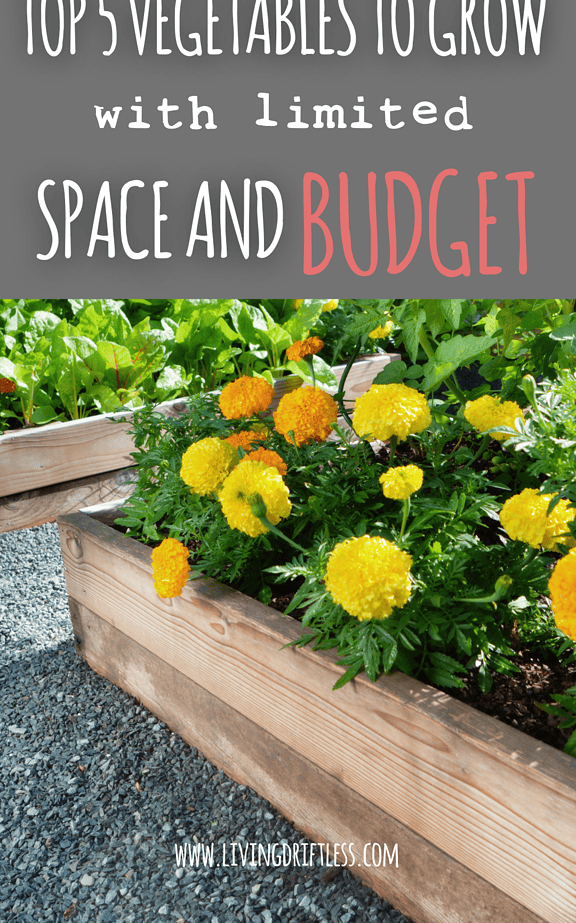
Figuring out what to grow is almost as much trouble as figuring out how to grow it, especially when you are working with a smaller area and not much money, you want to maximize your yield for the space. These are the top 5 vegetables I would grow if I had limited space and a tight budget.
Number 1: Green Pole Beans
Pole beans are amazing. They keep growing and producing beans, for as long as you want to pick them and the weather stays warm enough. The more you pick, the more you get. You need to provide something for them to climb up but one 8′ row, double-sided planting yielded me over 12 lbs last year. I could have kept picking but I had plenty of beans from other plantings.
If you grow the right type, you can also harvest them as dried beans for soups, stews, and baked beans, after you have had your fill of green beans. Just leave them on the vine to dry and harvest before you have a freeze. Good multi-purpose beans I have grown include Kentucky Wonder Pole Beans and Scarlett Runner Beans (flowers are also edible).
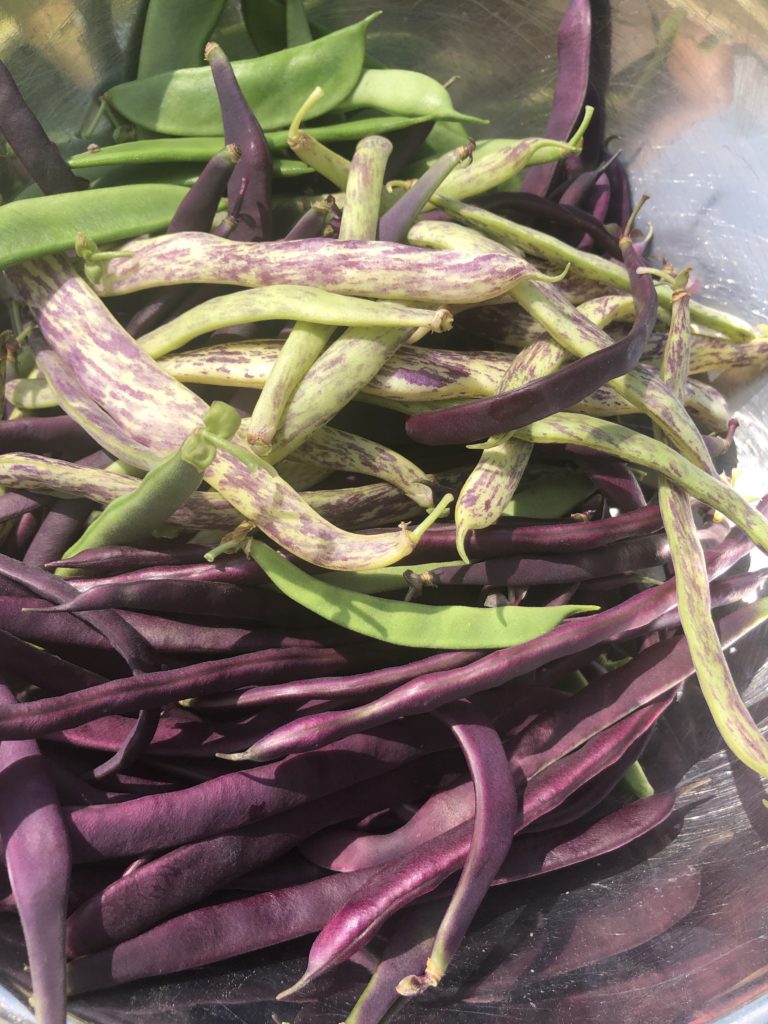
You can grow quite a large number of beans on a teepee trellis setup. 5 or more branches or bamboo poles tied at the top make a good trellis in a smaller footprint.
Number 2: Kale
This is second place in my top 5 this year because kale is very nutrient-dense per ounce. It freezes well, works in salads, and can handle frost, making kale a decent late-season crop. It can be harvested young, as single leaves for salad greens, or even younger as microgreens. I had three kale plants last year and they provided plenty for stews, salads, dried, and the freezer. I planted them in Spring and harvested them all season, until early December.
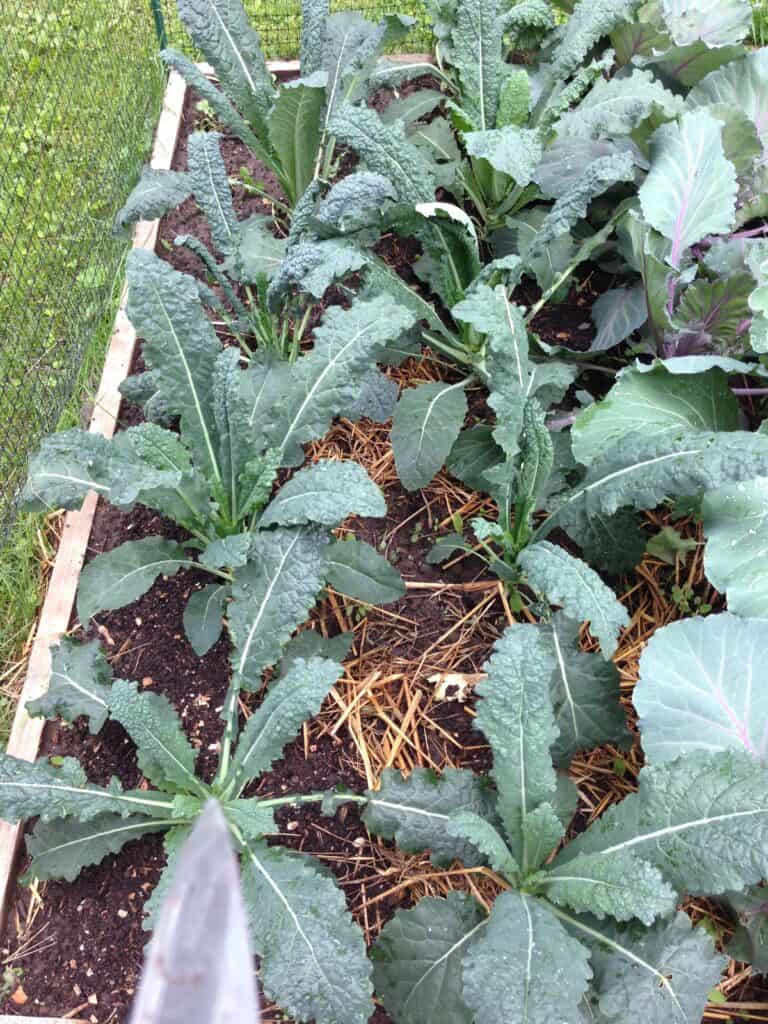
We grow mostly Lacinato Kale because we find it’s less tough to eat and grows so long with little attention. Kale plants grow pretty big but even one will provide a decent harvest.
Number 3: Onions/garlic
Many recipes have one, or more, of these in them, making them a good storage staple. Onions can be planted in a relatively small space and you can harvest them from when they grow a stem to when they are fully grown, gradually thinning your planting to 4″ apart. I like to grow mine in blocks – ending up with a 2’x2′ block, yielding 18 full-size onions and 30-40 green onions as we thin. Onions are also great to tuck in amongst other plantings – they can help deter pests!
Onions can be diced and dried or frozen, pickled, or kept whole if properly cured. Look for storage-type onions and plant them in cool spring weather.
Garlic is similar to onions. You get 18 full-size garlic from a 2’x2′ space but you can also get garlic scapes (flower stem) which is a bit of a delicacy around here, plus green garlic, around 20 of those. Like the onions, you can plant them closer and thin as they grow. Garlic can be dried, pickled, fermented, or stored whole (when cured). If you grow extra garlic, you can use it for seed the next year (you plant the clove), making it very cost-effective.
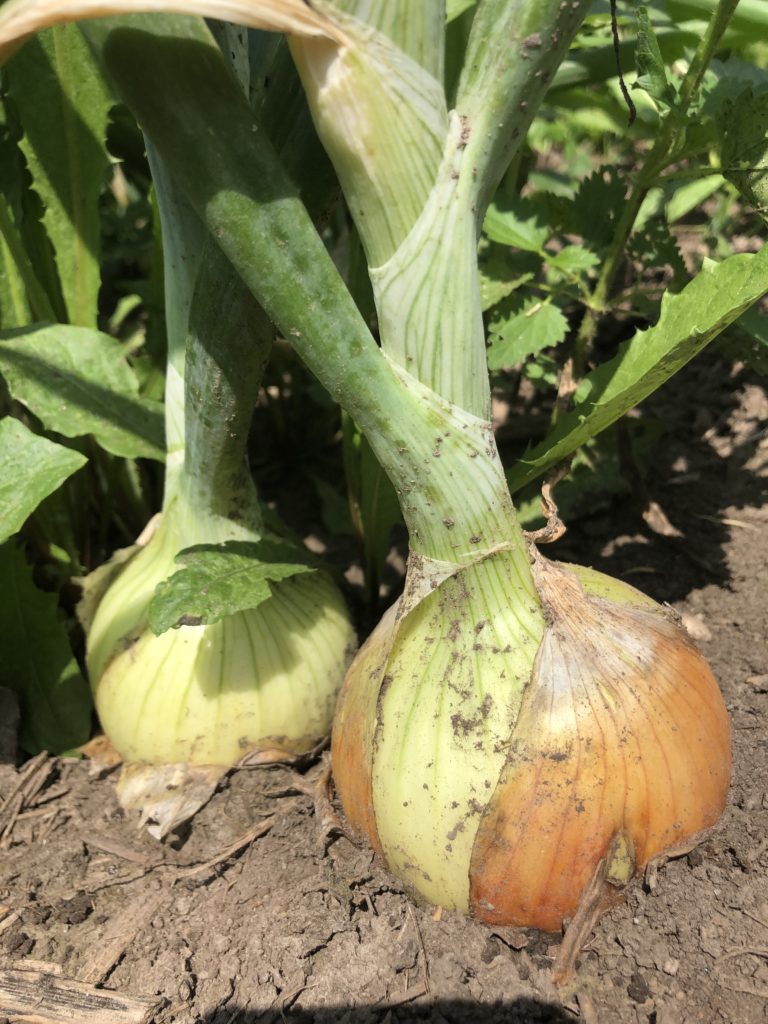
Ideally, you’d grow both, but if space and budget are an issue, choose one. I’d choose garlic.
Number 4: Winter Squash
These are great to grow, as, on a per-pound basis, they provide quite a few calories. Winter squash also stores pretty well, can be frozen or canned and you can eat it as a savory or sweet treat. the best bit? they also work well as animal feed – our chickens and pigs love winter squash. They take a fair amount of room to grow but you can tie them to a trellis if you support the weight of the fruit (tights work great for that). I love heirloom varieties, look for good storage types or just grow your favorites.
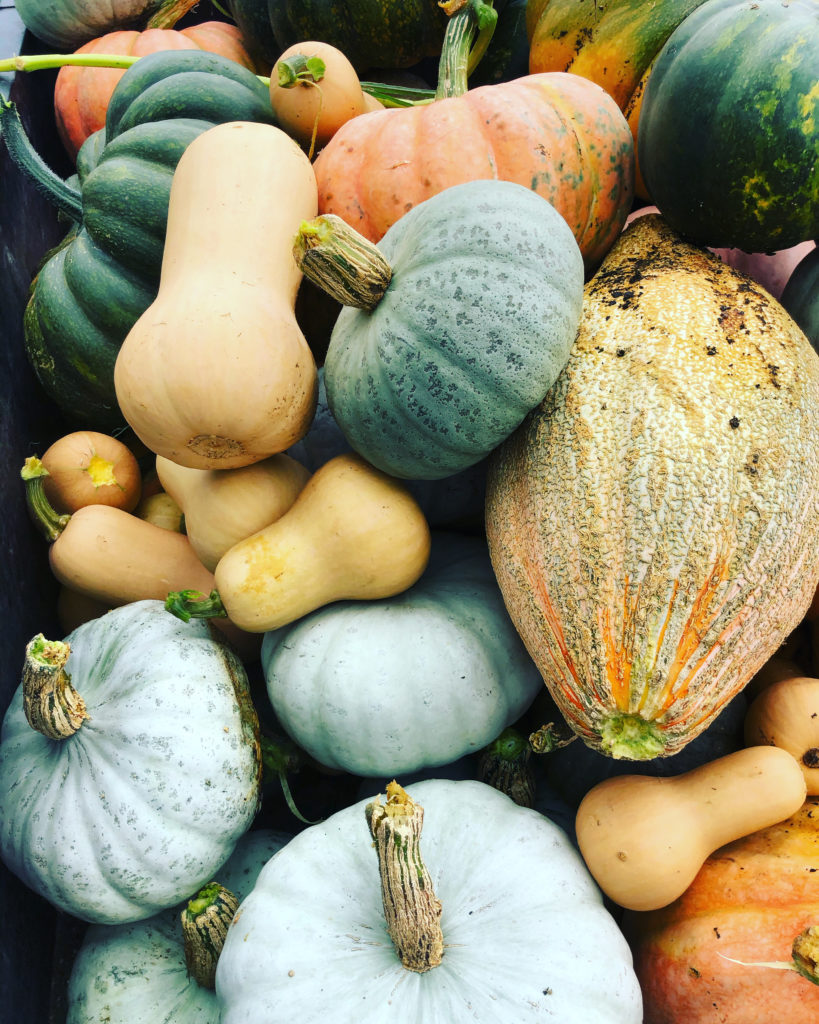
Number 5: Tomatoes
Last but by no means least on my top 5 vegetables to grow this year list are Tomatoes! Tomatoes (and peppers) are some of the most expensive produce items you can buy on a per-pound basis. We use a lot of tomato products – from sauce, to diced and whole tomatoes and tomato paste. Then we have salsa, ketchup, tomato soup, canned chili and pasta sauces. I use a LOT and it gets expensive.
For cooking tomatoes, I like Amish Paste Tomatoes – they are HUGE and cut down on my workload when processing. To add flavor, I throw in a few of the other types I grow. I love Heirloom varieties for fresh eating and salsa, sometimes a cherry tomato too (usually Sungold). Tomatoes can be grown in a raised bed with a trellis or some other support. If you want to grow in containers, then try a determinate variety like Roma Tomatoes. Determinate varieties grow to around 4-5 tall and tend to be more of a bush style, rather than a vine.
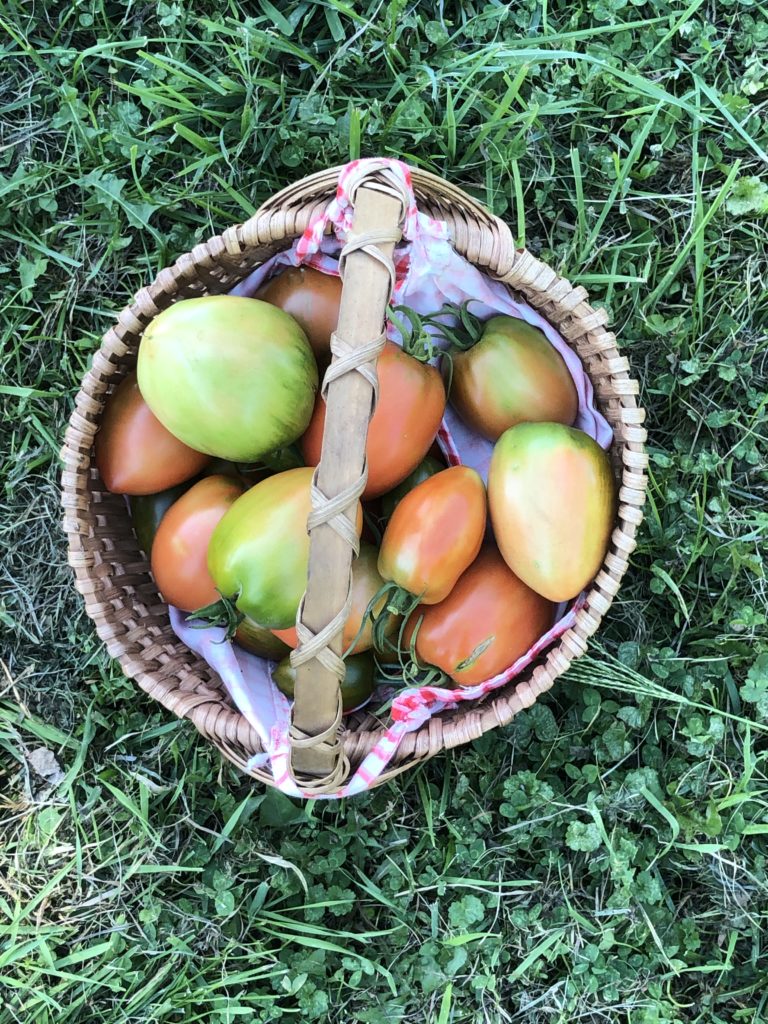
We grow what we like
We grow what we use a lot of, which will be the most versatile for us and with a lot of options for storage and preservation for later use. When you are just starting out, my list of top 5 vegetables is a great starting point. for what is possible.
If you need some ideas on how to get your garden started, try the Simple Guide To Starting a Food Garden on a Budget. If you are confused about what can be direct-seeded and when, check out the Garden Planning Calendar on the National Garden Association website – it’s FREE.
The most important thing to grow? What you, and your loved ones, will eat and enjoy eating. That’s what we do and it works every time.
It has been several years since I have had a garden. I was thinking about starting up a container garden again this summer. Thank you for the great ideas on what to plant!
I hope you do grow a bit, containers are nice and easy. Happiness and veggies!
Thanks for the tips! I’ve been trying to figure out what to plant and this has helped a lot!
So glad! Hope you enjoy spring in your garden.